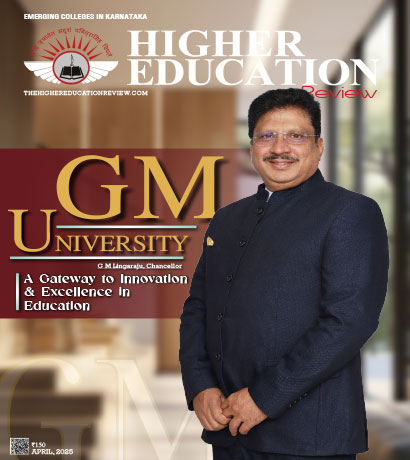EMBRacing Seal For Student Success In Stem

Anu Gokhale, Professor, Illinois State University
Anu has doctoral degree in Philosophy from Lowa State University, US, she is an internationally known scholar in the field of computing, her research focuses on networks, algorithms, and data analytics and well known for her excellence in teaching and dedication to service.
Reflecting on the unprecedented challenges of the past two years, higher education leaders have an opportunity to leverage lessons learned to introduce new strategies that drive student success in science, technology, engineering, and mathematics (STEM). In fall 2020, when teaching & learning was completely online for even those STEM courses that were traditionally offered face-to-face (F2F), I kept a close eye on student performance in my technical courses as compared to that in previous semesters. It was surprising that some students were quickly falling behind and I decided to investigate, but in a casual non threatening environment.
I asked my graduate teaching assistant to schedule a one-on-one 10-minute mentoring session with each student and in conversation, ask a few key questions that I created. The data revealed that students who were falling behind needed more social and emotional support to deal with circumstances that were beyond their control; they had consequently lost the impetus to succeed in schoolwork. Who among us has not been through tough times and in need of support?
It was time to research teaching-learning techniques that have proven effective in helping students when there are disruptions in their lives and understand the nature of support that could empower them. I came across the concept of social emotional learning the underlying assumption is that students who have a positive self-esteem and healthy self-image do better academically as well as in life. It is the emotional strength that carries a person through difficult situations. I decided to embrace a holistic combination of Social, Emotional, and Academic Learning (SEAL) for students.
In addition to explaining and conveying science and technology concepts in multiple ways including techniques like simulations to address different learning styles of students, I held small-group social hours every week where students could share aspects of their lives outside academics. It was important to acknowledge that students have the right to feel the way they feel, even if sometimes my teaching assistant or I mayhave disagreed with their viewpoints or may have thought that they were overreacting.
Additionally, we discussed how students could capitalize on resources offered by the institution or in the community where they resided and adopt new study habits for the new norm.The student club meetings continued in the online setting with speakers from business and industry offering career advice. My teaching assistant and I were pleased when all students successfully completed the STEM courses and had an improved outlook on the new teaching learning environment. This finding is in agreement with many research studies, which have shown that fostering a sense of community and empathy improves student attitudes and behaviors, which in turn positively impact academic achievement.
In fact, SEAL ought to be implemented well before students enter college. Underprepared students entering the rigor of post-secondary STEM education pose challenges for higher education. In efforts to prepare college-ready students, STEM education is delivered to K-12 audiences by pre-college programs across the nation, many of which serve underrepresented and underserved students as part of their core missions. In these programs, while there is robust attention to STEM experiential learning and college orientation events, few integrate social, emotional, and culturally-relevant aspects into the curriculum.The objective of SEAL is to empower students by enhancing their social-emotional intelligence and enabling its use to adapt to academic challenges in the context of preparedness for higher education, especially demanding coursework in STEM.
"In efforts to prepare college ready Students, STEM education Is delivered to K-12 audiences By pre-college programs across The nation, many of which serve Underrepresented and underserved Students as part of their core Missions"
STEM disciplines tend to focus on rational explanations and logical thinking, yet students can be influenced to embrace STEM by addressing the emotional side of their nature; we do so by nurturing favorable perceptions of STEM. Many studies have found that favorable perceptions develop positive attitudes and there is a direct relationship between attitudes and students performance. There is significant overlap between STEM competencies and the tenets of SEAL.Responsible decision-making, a primary component of careers in STEM, includes the effective use of problem-solving skills and the realization that different decisions have different consequences, which are critical tenets of social emotional learning as well. Engaging students in STEM challenges based on computer simulations gives them the opportunity to try something, fail, and try again after learning from their mistakes, which builds student resolve and grit; these are valuable skills for the future.
In conclusion, educators ought to develop their own social emotional intelligence, further their own ability to understand that their students need teaching and curricula that are responsive to their life experiences, and learn to empathize with their studentsin social contexts.The focus should be on hearing students out, being attentive to nonverbal cues, and seeing the situation through their eyes while setting aside one's own feelings or reaction. The maturation of our students, transitioning from teenagers to young adults with the future expectations of career, family, and friends (not to mention debt in many cases) is often ignored by higher education.
Inside and outside the classroom,by focusing attention on whole-student development, including social and emotional dimensions along with more traditional academic skills, higher education willbe better positioned to prepare students for an increasingly dynamic world as well as provide greater value added benefit for the time and cost of education.
Reflecting on the unprecedented challenges of the past two years, higher education leaders have an opportunity to leverage lessons learned to introduce new strategies that drive student success in science, technology, engineering, and mathematics (STEM). In fall 2020, when teaching & learning was completely online for even those STEM courses that were traditionally offered face-to-face (F2F), I kept a close eye on student performance in my technical courses as compared to that in previous semesters. It was surprising that some students were quickly falling behind and I decided to investigate, but in a casual non threatening environment.
I asked my graduate teaching assistant to schedule a one-on-one 10-minute mentoring session with each student and in conversation, ask a few key questions that I created. The data revealed that students who were falling behind needed more social and emotional support to deal with circumstances that were beyond their control; they had consequently lost the impetus to succeed in schoolwork. Who among us has not been through tough times and in need of support?
It was time to research teaching-learning techniques that have proven effective in helping students when there are disruptions in their lives and understand the nature of support that could empower them. I came across the concept of social emotional learning the underlying assumption is that students who have a positive self-esteem and healthy self-image do better academically as well as in life. It is the emotional strength that carries a person through difficult situations. I decided to embrace a holistic combination of Social, Emotional, and Academic Learning (SEAL) for students.
In addition to explaining and conveying science and technology concepts in multiple ways including techniques like simulations to address different learning styles of students, I held small-group social hours every week where students could share aspects of their lives outside academics. It was important to acknowledge that students have the right to feel the way they feel, even if sometimes my teaching assistant or I mayhave disagreed with their viewpoints or may have thought that they were overreacting.
Additionally, we discussed how students could capitalize on resources offered by the institution or in the community where they resided and adopt new study habits for the new norm.The student club meetings continued in the online setting with speakers from business and industry offering career advice. My teaching assistant and I were pleased when all students successfully completed the STEM courses and had an improved outlook on the new teaching learning environment. This finding is in agreement with many research studies, which have shown that fostering a sense of community and empathy improves student attitudes and behaviors, which in turn positively impact academic achievement.
In fact, SEAL ought to be implemented well before students enter college. Underprepared students entering the rigor of post-secondary STEM education pose challenges for higher education. In efforts to prepare college-ready students, STEM education is delivered to K-12 audiences by pre-college programs across the nation, many of which serve underrepresented and underserved students as part of their core missions. In these programs, while there is robust attention to STEM experiential learning and college orientation events, few integrate social, emotional, and culturally-relevant aspects into the curriculum.The objective of SEAL is to empower students by enhancing their social-emotional intelligence and enabling its use to adapt to academic challenges in the context of preparedness for higher education, especially demanding coursework in STEM.
"In efforts to prepare college ready Students, STEM education Is delivered to K-12 audiences By pre-college programs across The nation, many of which serve Underrepresented and underserved Students as part of their core Missions"
STEM disciplines tend to focus on rational explanations and logical thinking, yet students can be influenced to embrace STEM by addressing the emotional side of their nature; we do so by nurturing favorable perceptions of STEM. Many studies have found that favorable perceptions develop positive attitudes and there is a direct relationship between attitudes and students performance. There is significant overlap between STEM competencies and the tenets of SEAL.Responsible decision-making, a primary component of careers in STEM, includes the effective use of problem-solving skills and the realization that different decisions have different consequences, which are critical tenets of social emotional learning as well. Engaging students in STEM challenges based on computer simulations gives them the opportunity to try something, fail, and try again after learning from their mistakes, which builds student resolve and grit; these are valuable skills for the future.
In conclusion, educators ought to develop their own social emotional intelligence, further their own ability to understand that their students need teaching and curricula that are responsive to their life experiences, and learn to empathize with their studentsin social contexts.The focus should be on hearing students out, being attentive to nonverbal cues, and seeing the situation through their eyes while setting aside one's own feelings or reaction. The maturation of our students, transitioning from teenagers to young adults with the future expectations of career, family, and friends (not to mention debt in many cases) is often ignored by higher education.
Inside and outside the classroom,by focusing attention on whole-student development, including social and emotional dimensions along with more traditional academic skills, higher education willbe better positioned to prepare students for an increasingly dynamic world as well as provide greater value added benefit for the time and cost of education.

